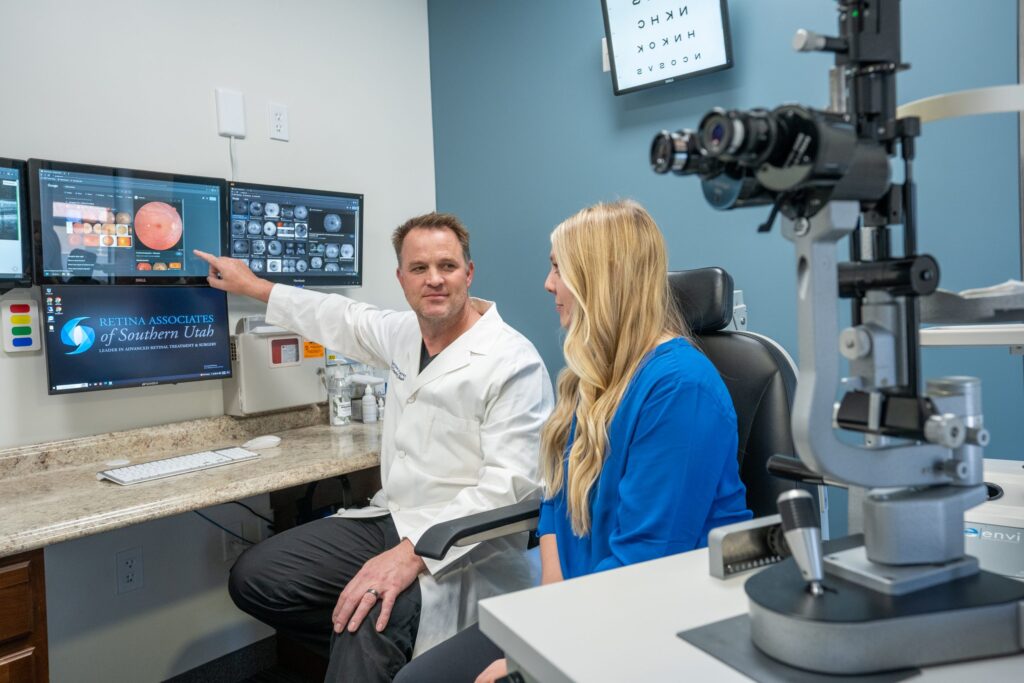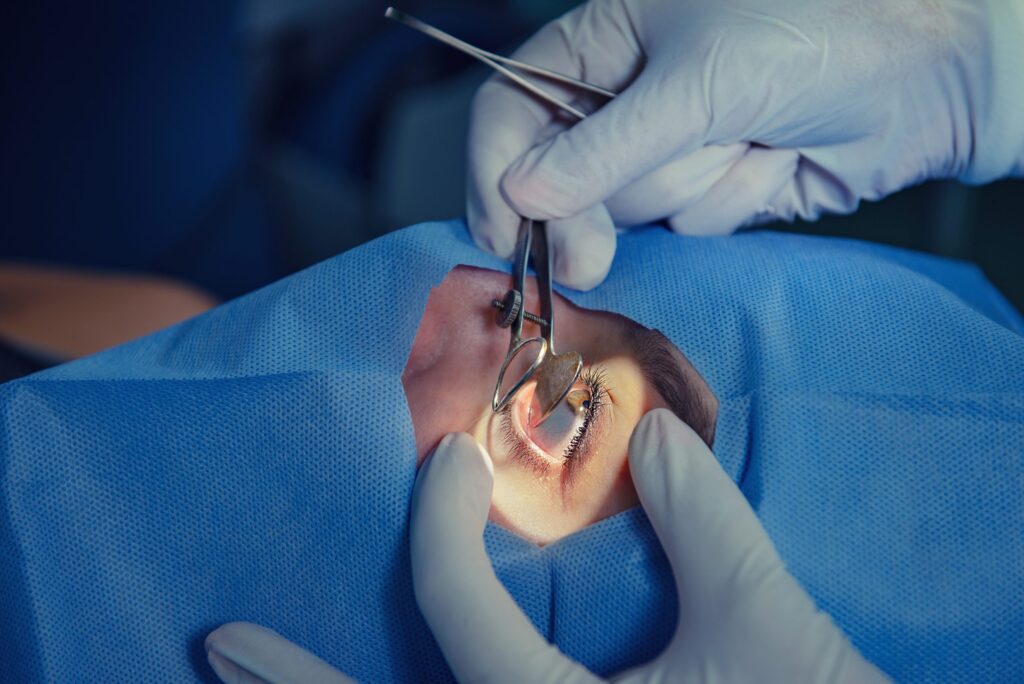Have you ever dreamt of waking up and seeing the world clearly without the need for glasses or contact lenses? With the advancements in medical technology, this dream can become a reality through LASIK surgery. In this article, we will take you on a journey through the world of LASIK, from understanding the basics of the procedure to debunking common myths and helping you make an informed decision about whether LASIK is right for you.
Understanding the Basics of LASIK Surgery
LASIK, or Laser-Assisted in Situ Keratomileusis, is a surgical procedure that aims to correct refractive errors in the eye, such as nearsightedness, farsightedness, and astigmatism. The procedure involves reshaping the cornea, the transparent front part of the eye, using a highly precise laser.
During the surgery LASIK, a thin flap is created on the cornea, which is then lifted to expose the underlying tissue. The excimer laser is then used to remove small amounts of tissue, reshaping the cornea to correct the refractive error. The flap is then placed back in position, acting as a natural bandage.
LASIK surgery has revolutionized the field of ophthalmology, providing patients with a safe and effective way to improve their vision. The procedure is performed by highly skilled surgeons who have undergone extensive training and have access to state-of-the-art technology.
One of the key advantages of LASIK surgery is its quick recovery time. Most patients experience improved vision within 24 hours of the procedure, with minimal discomfort and a rapid return to normal activities. This is due to the fact that the cornea heals quickly and the flap created during the surgery adheres securely to the underlying tissue.

The Science Behind LASIK
The science behind LASIK is fascinating and complex. The cornea plays a crucial role in focusing light onto the retina, which is responsible for transmitting visual information to the brain. When the shape of the cornea is irregular, it can cause refractive errors, leading to blurry vision.
By using a highly precise laser, LASIK surgery reshapes the cornea to correct these refractive errors. The excimer laser emits a cool ultraviolet light beam that precisely removes microscopic amounts of tissue from the cornea, allowing it to assume a more ideal shape. This reshaping process allows light to be properly focused onto the retina, resulting in clearer vision.
It is important to note that LASIK surgery is a highly individualized procedure. Each patient’s eyes have unique characteristics, and the surgeon takes these into account when planning and performing the surgery. This personalized approach ensures the best possible outcome for each patient.
The Evolution of LASIK Technology
Since its introduction in the 1990s, LASIK technology has undergone significant advancements. Early LASIK procedures involved the use of mechanical microkeratomes to create the corneal flap, whereas modern LASIK procedures utilize Femtosecond lasers, which offer a greater level of precision and safety.
The use of Femtosecond lasers has revolutionized LASIK surgery, providing surgeons with more control and accuracy. These lasers create the corneal flap with a high level of precision, resulting in better visual outcomes and a reduced risk of complications.
Furthermore, wavefront-guided LASIK has been developed, allowing for a custom-tailored treatment that takes into account the individual nuances of each patient’s eyes. Wavefront technology creates a detailed map of the eye, measuring even the most subtle imperfections. This information is then used to guide the laser during the surgery, resulting in a more precise and personalized treatment.
These advancements in LASIK technology have significantly improved the safety and effectiveness of the procedure. Patients can now benefit from higher success rates, reduced risk of complications, and improved visual outcomes.
In conclusion, LASIK surgery is a remarkable procedure that has transformed the lives of millions of people worldwide. Through the use of advanced technology and the expertise of skilled surgeons, LASIK offers a safe and effective solution for correcting refractive errors and improving vision. Whether it’s nearsightedness, farsightedness, or astigmatism, LASIK can provide a life-changing solution, allowing individuals to see the world with clarity and freedom.
The Journey to LASIK Surgery
Embarking on the journey to LASIK surgery is an exciting and life-changing decision. It is a step towards visual freedom and a future without the hassle of glasses or contact lenses. Let’s delve deeper into the process and explore the pre-surgery consultation and evaluation, as well as what to expect on the day of the surgery.
Pre-Surgery Consultation and Evaluation
The first step towards LASIK surgery is a comprehensive consultation with an experienced ophthalmologist. This consultation is crucial as it allows the ophthalmologist to assess your ocular health, evaluate your refractive error, and determine your eligibility for LASIK.
During the consultation, the ophthalmologist will take the time to understand your visual needs and expectations. They will perform a thorough examination of your eyes, checking for any underlying conditions that may affect the success of the surgery. This evaluation may include a series of tests, such as corneal topography, which maps the shape of your cornea, and wavefront analysis, which assesses the subtle irregularities of your eye’s optical system.
These tests provide valuable information that helps the ophthalmologist determine the most suitable treatment plan for your unique needs. They allow for a personalized approach, ensuring that the LASIK procedure is tailored to address your specific refractive error.
The Day of the Surgery: What to Expect
The day of your LASIK surgery is a significant milestone on your journey to visual freedom. Before the procedure, your ophthalmologist will provide you with detailed instructions and answer any questions you may have. It is essential to follow these instructions meticulously to ensure the best possible outcome.
Once you arrive at the surgical center, you will be warmly greeted by the staff who will guide you through the process. They understand that this may be a nerve-wracking experience for you and will do their best to make you feel comfortable and at ease.

Before the surgery begins, the ophthalmologist will administer numbing eye drops to ensure your comfort throughout the procedure. These drops will prevent any pain or discomfort during the surgery, allowing you to relax and focus on the exciting transformation taking place.
As you lie down on a comfortable bed, the ophthalmologist will explain each step of the procedure, ensuring that you are well-informed and prepared. They will guide you through the process, letting you know what to expect at every moment.
The LASIK procedure itself typically takes less than 15 minutes per eye. During this time, the ophthalmologist will use an excimer laser to reshape your cornea, correcting your refractive error. Although you may feel slight pressure or experience a temporary loss of vision, rest assured that the process is painless and the ophthalmologist will be with you every step of the way.
After the surgery, you will be taken to a recovery area where you will rest for a short period. This time allows your eyes to adjust and begin the healing process. The ophthalmologist will provide you with post-operative instructions, including the use of prescribed eye drops and any necessary precautions to take during the recovery period.
Once you are deemed ready, you will be able to return home, beginning your journey towards clear, unaided vision. It is important to attend all follow-up appointments with your ophthalmologist to ensure that your eyes are healing properly and that you are experiencing the full benefits of LASIK.
Remember, LASIK surgery is a remarkable procedure that has helped millions of people achieve visual freedom. By choosing this path, you are taking a significant step towards a future where clear, unaided vision is a reality. Embrace the journey, and enjoy the incredible transformation that awaits you!
Life After LASIK: The Immediate and Long-Term Effects
Post-Surgery Care and Recovery
Following LASIK surgery, it is crucial to follow your ophthalmologist’s instructions for post-operative care. This typically involves using prescribed eye drops, avoiding rubbing your eyes, and wearing protective eyewear as advised.
While some patients experience immediate vision improvement after LASIK, others may initially experience slight fluctuations in their vision. It is important to be patient during the healing process, as your vision will continue to stabilize over the coming weeks.
Long-Term Vision Improvement and Maintenance
LASIK surgery has a high success rate in significantly improving vision. Many patients achieve 20/20 vision or better after the procedure, allowing them to enjoy a life free from glasses or contact lenses.
To maintain the long-term benefits of LASIK, it is essential to attend regular follow-up appointments with your ophthalmologist. These appointments allow your eye doctor to monitor your progress, address any concerns, and ensure the ongoing health of your eyes.

Debunking Common Myths about LASIK
Addressing Safety Concerns
One common myth surrounding LASIK is that it is a risky procedure. However, LASIK is considered a safe and effective treatment for refractive errors when performed by a skilled and experienced ophthalmologist.
While all surgical procedures carry inherent risks, LASIK complications are rare. The vast majority of patients experience improved vision and are highly satisfied with the results of their LASIK surgery.
The Truth about LASIK Success Rates
Another myth surrounding LASIK is the belief that the procedure’s success rates are exaggerated. Studies have shown that the vast majority of LASIK patients achieve the desired improvement in their vision, with more than 95% of patients reporting satisfaction with the results of their surgery.
It is important to consult with your ophthalmologist and discuss your individual case to have realistic expectations about the potential outcome of LASIK surgery.
Making the Decision: Is LASIK Right for You?
Evaluating Your Eligibility for LASIK
While LASIK can be a life-changing procedure for many individuals, it is essential to undergo a comprehensive evaluation to determine your eligibility. Factors such as your overall eye health, the stability of your vision prescription, and the absence of certain medical conditions will be taken into account during the evaluation process.
Your ophthalmologist will guide you through this evaluation and provide professional advice based on your specific circumstances. They will help you determine if LASIK is the right choice for you or if an alternative treatment option may be more suitable.
Weighing the Costs and Benefits
As with any medical procedure, it is important to consider the costs and benefits of LASIK surgery. While the initial cost of the procedure may seem significant, it is essential to weigh it against the long-term savings associated with no longer needing glasses or contact lenses.
In addition to the financial aspect, it is important to consider the impact that visual freedom can have on your daily life. Imagine waking up and being able to see clearly without reaching for your glasses or inserting contact lenses – a convenience that LASIK can offer.
Ultimately, the decision to undergo LASIK surgery is a personal one. Consult with your ophthalmologist, gather all the necessary information, and consider your own needs and preferences to make an informed choice about whether LASIK is the right path towards visual freedom for you.
Related: A Comprehensive Guide to Successful Vision Correction

